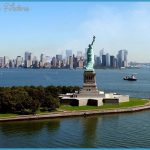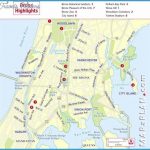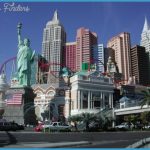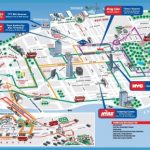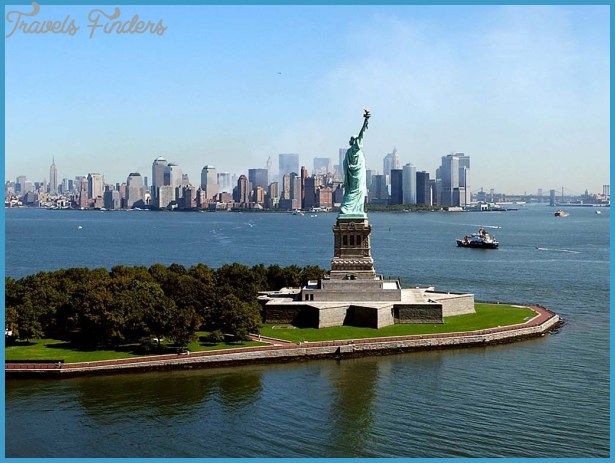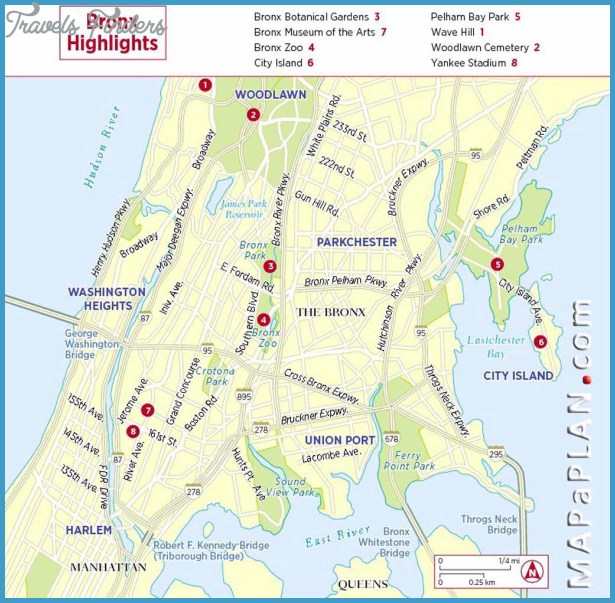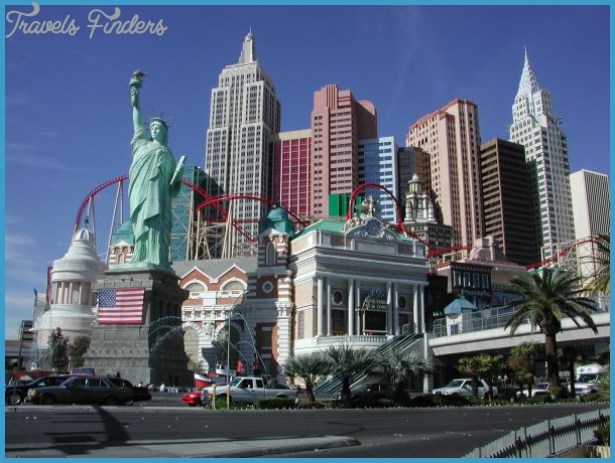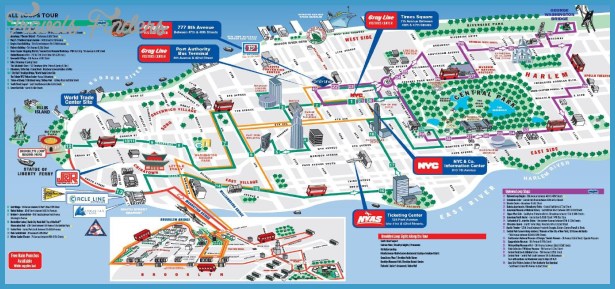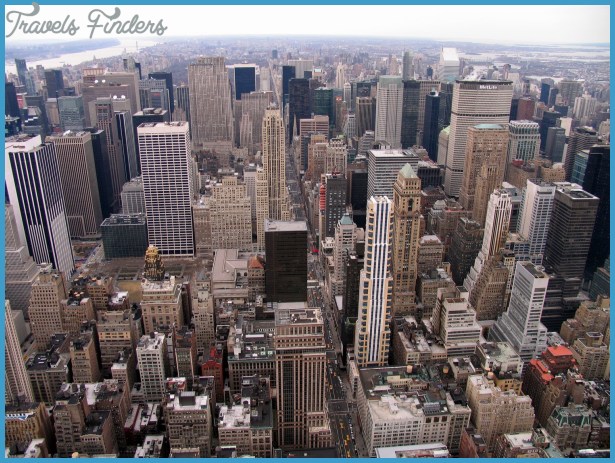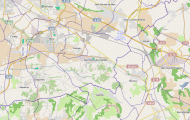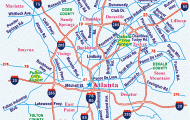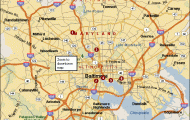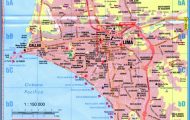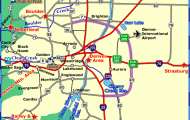New York notable latinos
Varela y Morales, Felix (1788-1853). Father Varela was appointed vicar general of the New York Archdiocese, where he served from 1829 until 1848, when he retired to St. Agustin, Florida. Varela came to New York in 1823 as an exile, for advocating the cause of Cuban independence from Spain. For almost 30 years Father Varela served the poor, especially Irish migrants. He founded the Transfiguration Church in lower Manhattan. He also founded schools, programs for women and orphans, and several newspapers, among them El Habanero (1824) and El Amigo de la Juventud (1825). Henna, Jose Julio (1853-1924). Puerto Rican political activist Henna continued in New York his campaign for the independence of Puerto Rico after being banished from that island by Spain. In 1895 Henna was elected president of the Revolutionary Party, and after 1898 he was elected as delegate to appear before the Senate and House committees on civil government in Puerto Rico. After graduating as a medical doctor in 1872, Dr. Henna became a leading physician associated with the French and Bellevue hospitals until his death.
Schomburg, Arturo Alfonso (1874-1938). Schomburg’s collection of letters, manuscripts, prints, playbills, paintings, and books by and about African-descent people became the cornerstone of the New York Public Library’s Division of Negro Literature, History, and Prints. He served also as the collection’s first curator. Schomburg was motivated to battle racism wielding as weapons the intellectual and artistic achievements of people of African descent. Shortly after his arrival in New York City in 1891, Schomburg started to participate in the revolutionary movements struggling for the independence of Cuba and Puerto Rico. Later, he became involved in the social and literary movement known as the Harlem Renaissance.
Hernandez, Rafael Marin (1892-1965). Composer Hernandez’s legacy includes about
3,000 songs, many composed in East Harlem. He created the well-known Cuarteto Victoria. One of the most important Puerto Rican composers, he is remembered for masterfully capturing Puerto Ricans’ nostalgia and patriotism in songs such as Lamento Borincano and Preciosa.
Cugat, Xavier (1900-1990). Cugat founded Xavier Cugat and His Orchestra in 1933, and he is credited with being the first to make Latin American music popular among
U.S. audiences. In his time, Cugat enjoyed a standing similar to that of Benny Goodman, Glenn Miller, and Artie Shaw. His orchestra became the platform from which future starts such as Frank Sinatra, Machito, Dinah Shore, Miguelito Valdes, Tito Rodriguez, and Bobby Capo launched their careers.
Garcia Rivera, Oscar (1900-1969). Representing East Harlem at the New York State Assembly from 1937 to 1940, Garcia Rivera took up the cause of seeking solutions to the grave problems affecting Latinos and the rest of the poor during the Great Depression. In 1926, shortly after his arrival in New York City, Garcia Rivera helped organize postal workers. Later, as a lawyer, he worked pro bono for needy clients in East Harlem. The first Puerto Rican to occupy an elected office on mainland United States, Garcia Rivera studied law at St. John’s University, graduating in 1930.
Colon, Jesus (1901-1974). Leading writer and socialist activist on behalf of Puerto Ricans, particularly those from the working class, Colon helped found organizations such as Alianza Obrera and several Spanish-language newspapers in Brooklyn. He was instrumental in building information bridges between Puerto Rico and New York State. Colon is best known for his book A Puerto Rican in New York and Other Sketches, which inspired several prominent writers among whom are Piri Thomas, Nicholasa Mohr, and Esmeralda Santiago.
Soto Velez, Clemente (1905-1993). A notable Puerto Rican poet and community activist, Soto Velez was also a leading member of the Puerto Rican nationalist party. He was jailed, with Albizu Campos, in 1937 in a federal prison in Atlanta. After being released in the 1940s, he moved to New York, where he lived until his return to Puerto Rico in 1986. He founded literary and community organizations, among them the Puerto Rican Merchants Association. Some of his best-known books are Caballo de Palo (Wooden Horse), Arboles (Trees), and La Tierra Prometida (The Promised Land).
Sardinas Montalbo, Eligio (Kid Chocolate) (1910-1988). A dazzling Cuban boxer who rose to fame in 1931, when he defeated junior lightweight champion Benny Bass, Kid Chocolate came to New York in 1928 and established a reputation as unbeatable in East Harlem arenas. A year later he gained widespread notoriety beyond the Latino public, when he fought the immensely popular Al Singer and raked in $49,000 a remarkable amount for a boxer in his weight category at the time.
Burgos, Julia de (1917-1953). Poet who left an indelible influence on Puerto Ricans in East Harlem, Julia de Burgos is considered by some the greatest female poet born in Puerto Rico. Love of nature and of Puerto Rico was her main inspiration. Her poems appear in books such as Poemas en Veinte Zurcos, Cancion de la Verdad Sencilla, and Yo Misma Fui mi Ruta. Today, the Julia de Burgos Latino Cultural Center, which was created in her honor, houses several projects, such as a high school and Taller Boricua, a theater workshop group with educational programs involving the arts.
Pantoja, Antonia (1922-2002). Teacher, social worker, and activist who, together with other professionals, helped found the Puerto Rican Forum Inc. in 1958. Her most lasting contribution was the creation of ASPIRA to address the high dropout rates among Puerto Rican students. The organization was instrumental in winning the legal battle known as the ASPIRA Consent Decree, which in 1974 made it mandatory for the state
of New York to provide bilingual education. Over the years ASPIRA has become a national organization that provides Latinos with leadership training, staff development, and after-school programs.
Sanchez-Korrol, Virginia (1944-). Preeminent scholar of the Puerto Rican and Latino experiences in New York and founder and president of the Puerto Rican Studies Association, Sanchez-Korrol helped to establish Puerto Rican studies as an academic discipline. She helped found the Department of Puerto Rican Studies at Brooklyn College, serving as its chair during the 1980s and 1990s. Among her influential publications are From Colonia to Community: The History of Puerto Ricans in New York City (1983) and Latinas in the United States: A Historical Encyclopedia (with Vicki L. Ruiz,
2006). Sanchez-Korrol’s service to the community includes also participation in advisory boards of cultural and government institutions. She has received numerous recognitions, such as the Puerto Rican Higher Education Award by the Brooklyn district attorney’s office and a leadership citation by the Brooklyn Borough president.
Ferrer, Fernando (Freddy) (1950-). During Ferrer’s 14-year tenure as borough president, the Bronx made a comeback after being a national symbol of urban decay. Before serving as borough president, Ferrer was city councilman. He was responsible for the legislation that made it mandatory for hospitals to provide bilingual interpreters at emergency rooms. He also introduced legislation to create the Civilian Review Board to control police brutality, as well as measures that protect gays and lesbians from discrimination. Ferrer ran for mayor of New York City thrice in 1997, 2001, and 2005. In 2003 The National Magazine of the Successful American Latino ranked him as the 42nd most influential Latino politician in the United States.
Hijuelos, Oscar (1951-). The best known of the Cuban American authors writing in English, Hijuelos won the Pulitzer Prize in 1990 for The Mambo Kings Play Songs of Love, a work of fiction. He was born in New York and graduated from the City University of New York.
Linares, Guillermo (1951-). Linares’s major contribution to the Latino community has been in the area of education. He started as a teacher in New York City public schools and then moved on to become president of the Local School Board #6 in northern Manhattan. In 1991 Linares gained notoriety for being the first Dominican to be elected to public office in the United States. He served in the New York City Council until 2001. During his tenure as councilman he continued to be a strong advocate for quality education and affordable housing. In 1995 Linares was invited to be part of President Clinton’s Advisory Commission on Educational Excellence for Hispanic Americans. In
2000 President Clinton appointed him chair of that commission. Major Michael Bloomberg appointed Linares as commissioner of Immigrant Affairs in 2004, a capacity in which Linares is still serving.
Velazquez, Nydia M. (1953-). Velazquez combined teaching in the City University of New York with political activism, and she rose to become a prominent leader in the local and national politics. She worked on behalf of Puerto Ricans and migrants in the 1980s. She was director of the Department of Puerto Rican Community Affairs in the United States. After being appointed to the New York City Council (1984-1986), the
first Puerto Rican woman to occupy that position, she went on to become the first Puerto Rican congresswoman in 1992, representing a district with a large Latino population. She has been visible for her advocacy on issues critical to the working class and the poor, such as health care and promotion of small businesses. In 2003 the Hispanic Business Magazine named Congresswoman Velazquez the Hispanic Business Woman of the Year.

